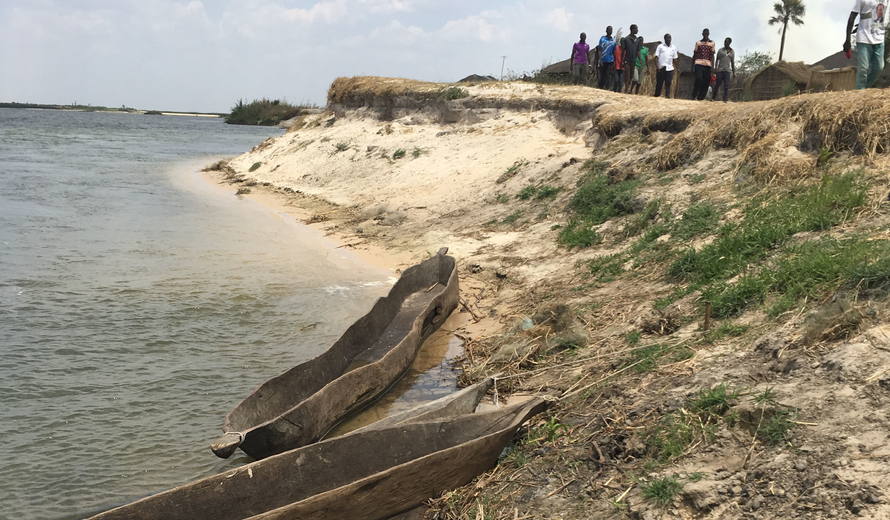Severe erosion threatens the shrines of Barotse Cultural Landscape
From 18 to 22 October 2018, the World Heritage Centre undertook a technical mission to the Barotse Cultural Landscape, a site on the Tentative List of Zambia. The mission met with the local communities to identify suitable development projects compatible with the safeguarding of the cultural landscape, and to seek the support of the traditional custodians to nominate the site on the World Heritage List. Zambia has been working on the nomination dossier since 2008.
The mission team met with the Barotse Royal Establishment and the traditional elders, who informed that the erosion of the Zambezi River threatens the site. The landscape includes several culturally important sites, such as the Makono Village, where the royal shrine and the burial ground of the founding Queen of the Kingdom is located. The mission recommended that temporary structures would be put in place before next rain season, to avoid irreparable damage to the cultural sites.
The King of the Barotse Land and the communities confirmed their support to the finalisation of the nomination dossier of the Barotse Cultural Landscape, as requested by the World Heritage Committee in Decision 38 COM 8B.19 (Doha, 2014).Decisions (1)
The World Heritage Committee,
- Having examined Documents WHC-14/38.COM/8B and WHC-14/38.COM/INF.8B1,
- Refers the nomination of Barotse Cultural Landscape, Zambia, to the World Heritage List in order to allow the State Party to strengthen the nomination file with:
- a robust boundary that takes account of the major negative impacts of new roads, and other developments, and excludes urban areas, the airport, and zones for mining and oil and gas extraction, and includes essential attributes that reflect fully the key aspects of the Barotse socio-cultural-political system and its landscape impacts,
- survey, documentation and recording of the physical manifestations of the wider flood plain cultural landscape including the Liuwa National Park, and all of its traditional land management practices and other traditions,
- a structured management approach that brings together traditional practices and planning policies based on the involvement and know-how of local communities,
- elaborate a sustainable landscape protection policy that would, in the future, protect the site from the risks that threaten its integrity;
- Recommends that, as a matter of urgency, steps should be taken to ensure that further pylons are not installed in the landscape next to palaces;
- Encourages the State Party to call upon ICOMOS in the framework of upstream processes to advise them on the above recommendations;
- Considers that any revised nomination would need to be considered by an expert mission to the site;
- Recommends the State Party to invite an ICOMOS Advisory Mission.
